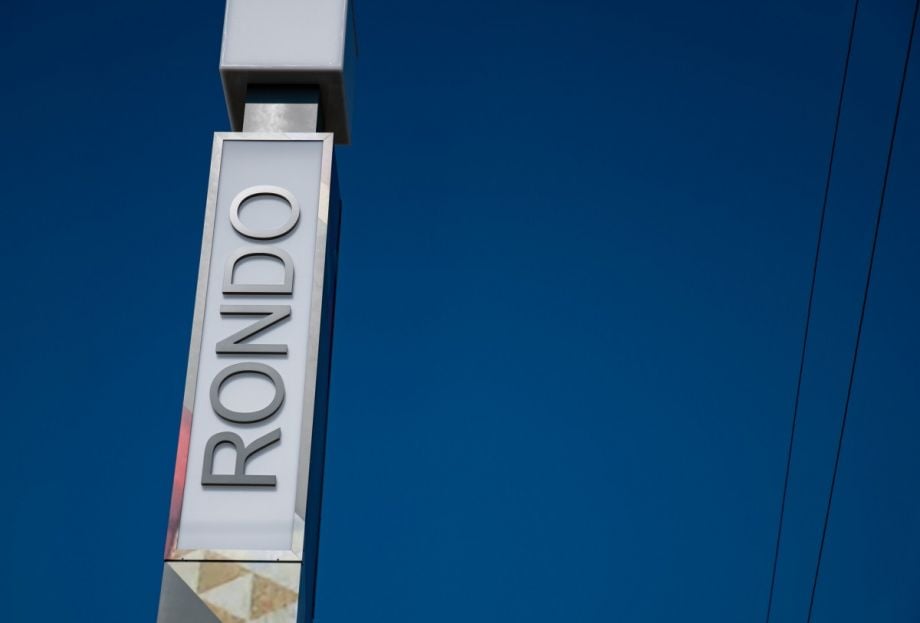When I-94 sliced through St. Paul’s Rondo neighborhood in the 1950s, it displaced Black families and Black-owned businesses that had been part of a thriving economic ecosystem since the late 1800s. By the time the interstate was complete in the late 1960s, hundreds of residents and businesses had been displaced. Today, speculative investors in Rondo and the rising rents they bring are threatening residents and Black-owned businesses yet again. But a local community land trust crafted a solution to address the affordability challenge: They formed a commercial community land trust and diligently pieced together funding from many different sources in order to develop a mixed-use project with affordable apartments for seniors and below-market-rate commercial space for entrepreneurs.
“One of the most pressing issues is how small, minority-owned businesses could afford commercial space. They were getting pushed out of the market because of speculative investors coming in, buying properties, and raising rents,” explains Mikeya Griffin, executive director of the nonprofit Rondo Community Land Trust (CLT).
Meanwhile, seniors in the community who had managed to maintain homes in the area were struggling to afford smaller alternatives when it came time to downsize. “We have a lot of elders who needed to move from their homes but want to stay in the community, so we needed something that would be affordable to them on disability, social security, or retirement funds,” Griffin says.
When investors were drawn to two lots on commercial corridor Selby Avenue — a “pillar of the Rondo community,” says Griffin — the community wasn’t interested in their proposed pricey four- to five-story condos. Instead, Rondo CLT worked with community members to figure out what they did want and need, and five years ago acquired the lots from the city for what Griffin says was “a nominal fee.”
Today, Selby Milton Victoria Project stands on that land. Two buildings offer 34 units of affordable senior housing on top of 9,300 square feet of affordable commercial space. The housing, open to people earning 30%-50% area median income, has been full since the 2018 opening. While the average rent for office space in the Twin Cities reached $15.95 per square foot in 2020, the Selby Milton spaces rent at $7 per square foot and are home to six Black-owned businesses: an iconic local coffee shop, a shoeshine company, a therapy practice, two arts initiatives, and a dispute resolution center.
To bring the project to life, Rondo CLT created a commercial community land trust, the first of its kind in Minnesota. According to the Institute for Local Self-Reliance, community land trusts have created new pathways to affordable housing for the last 40 years. Now some of them, like the Rondo CLT, are getting into affordable commercial spaces as well. It can be a difficult venture, though, because there are fewer funding sources available for commercial space. Rondo CLT circumvented that in their mixed-use project by separating the commercial space from the housing space. Rondo CLT owns the commercial space, leasing it out to occupants. In 2015 they partnered with Trellis, an experienced nonprofit affordable housing developer in the area, to both fund and run the housing component.
“Putting affordable senior rental units on top of affordable commercial space just had not been heard of, so it took a lot of effort to explain what we were trying to do,” Griffin says.
Trellis spearheaded the financing element of the project. Roughly a dozen funding sources came together, all with sometimes competing priorities. They laboriously worked to meet various parameters, going after larger chunks of money by offering units to people who had previously experienced homelessness and pursuing smaller grants that dictated building features like energy-saving infrastructure.
“Every project is different, it’s a puzzle every time,” says Elizabeth Flannery, president of Trellis. “At the beginning of every project, we start building a pro forma spreadsheet to determine the expenses and figure out what the gap is. We make assumptions that we’ll get certain amounts of money based on funding from other projects and go from there.”
Ultimately, Trellis pulled it off with low-income housing tax credits in partnership with U.S. Bank, and donations from philanthropic and private sources as well as city and federal funding. In exchange for their roughly $8 million direct investment in the project, U.S. Bank gets major tax breaks for providing valuable equity to Trellis.
“We’re excited by the newness of the project,” Flannery says. “When we first heard the vision, we thought it would be great to figure out how to finance this type of project. We’re already thinking of replicating it in another project we’re working on in Minneapolis.”
Trellis has been presenting the way that they approached this financial model at conferences around the nation and have noticed a lot of interest in a mixed-use model where it’s local businesses rather than big box stores on the ground floor.
Looking back, patience has been key for Flannery. “You have to kind of cobble all of these things together and meet different requirements to make it feasible and find people who want to undertake it,” she says. “You have to understand that, be patient, and know that you’re in it for the long-haul. But if you’re patient, creative, and a problem solver, you can get it done.”
This article is part of Elements of an Equitable Recovery, a series on solutions helping small, especially woman- and minority-owned, businesses survive and thrive. This series is generously underwritten by LISC.

Cinnamon Janzer is a freelance journalist based in Minneapolis. Her work has appeared in National Geographic, U.S. News & World Report, Rewire.news, and more. She holds an MA in Social Design, with a specialization in intervention design, from the Maryland Institute College of Art and a BA in Cultural Anthropology and Fine Art from the University of Minnesota, Twin Cities.
Follow Cinnamon .(JavaScript must be enabled to view this email address)
















